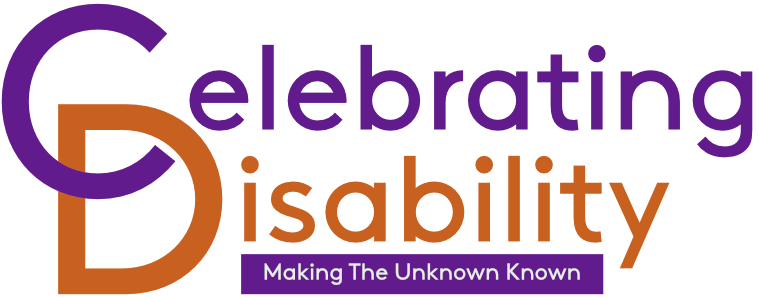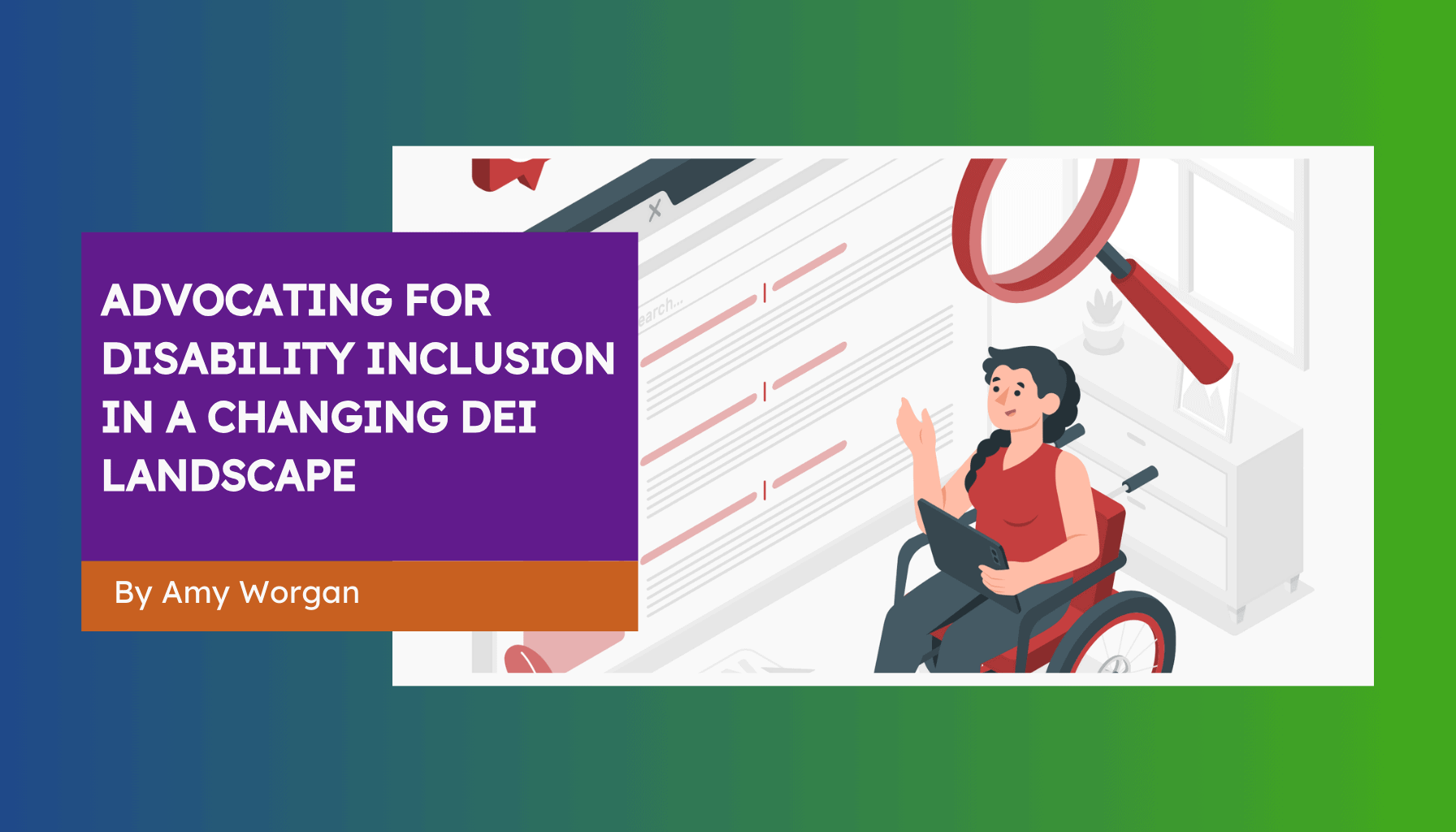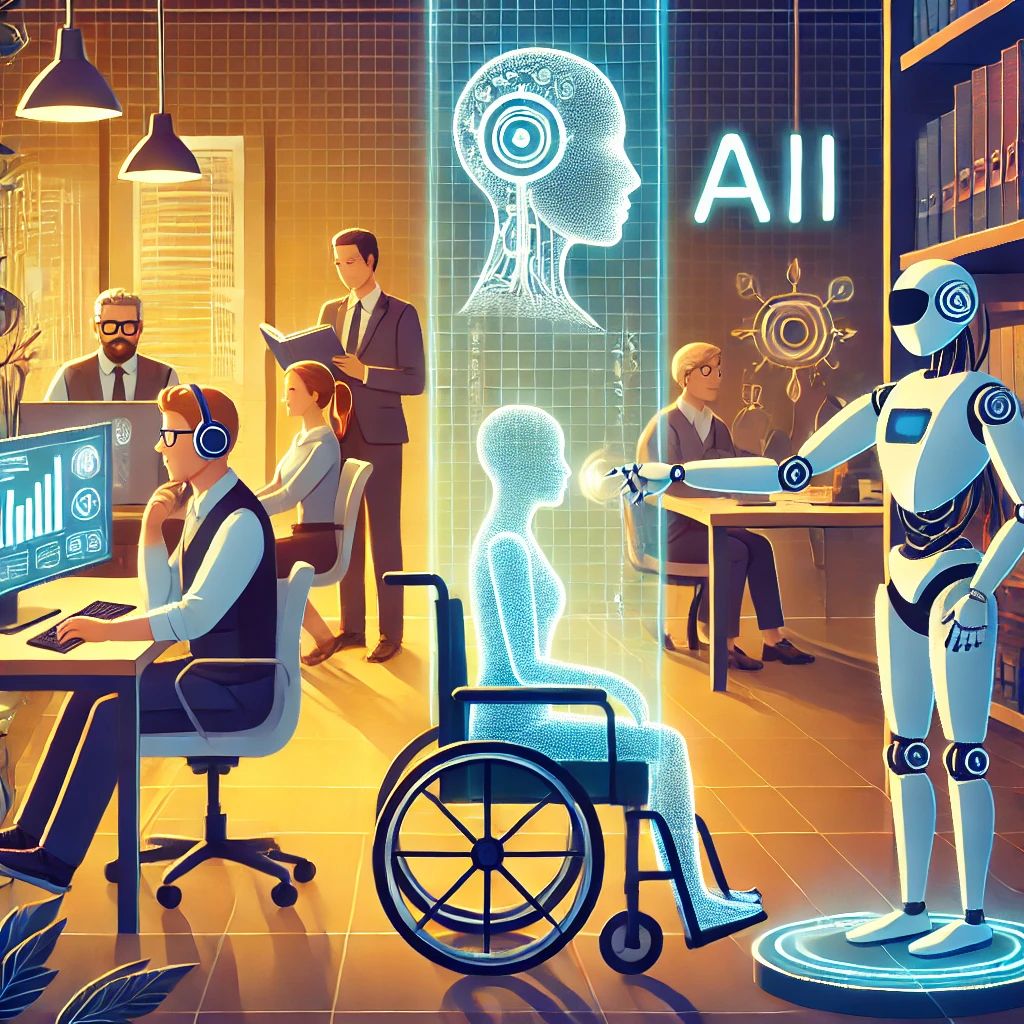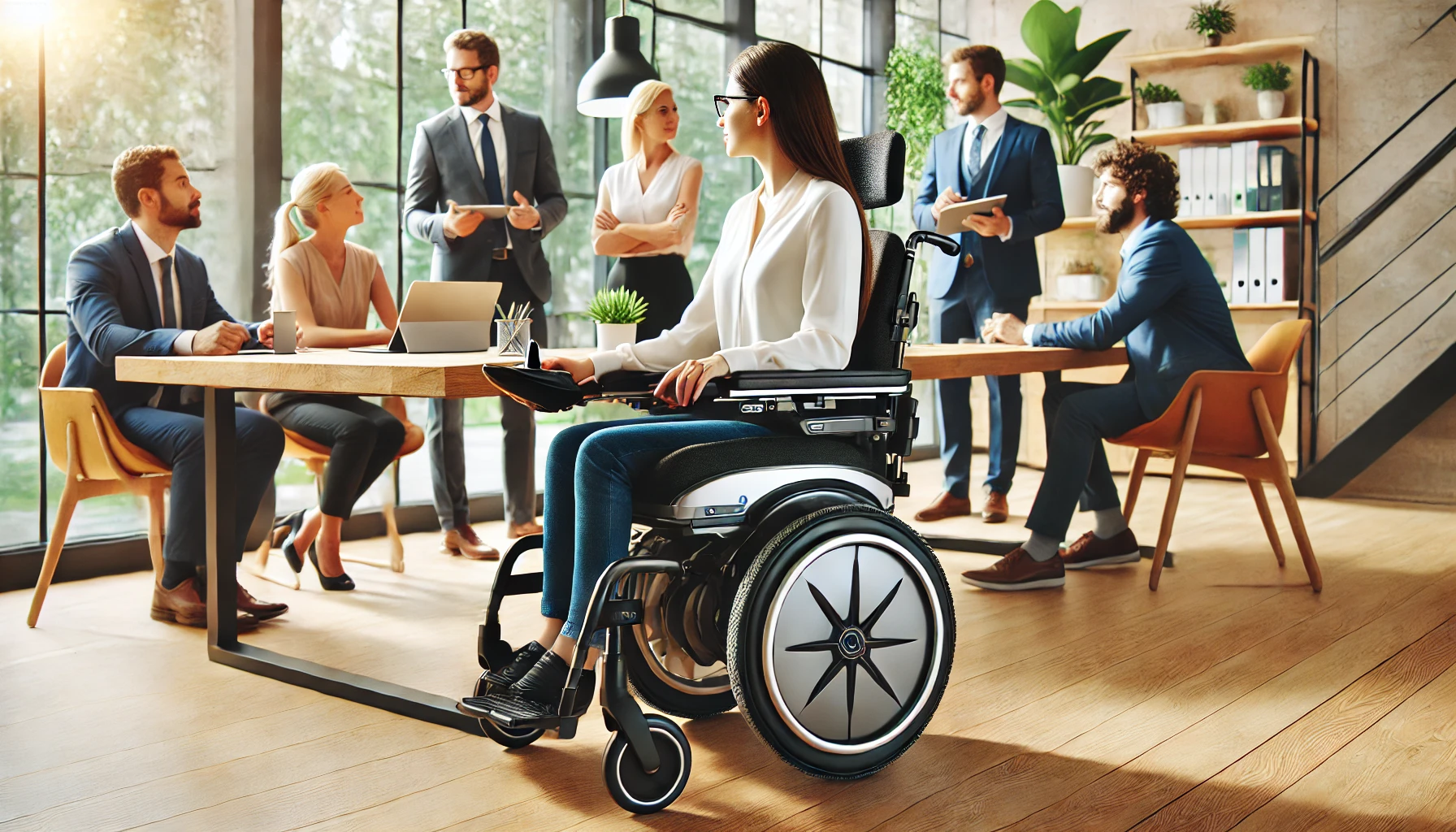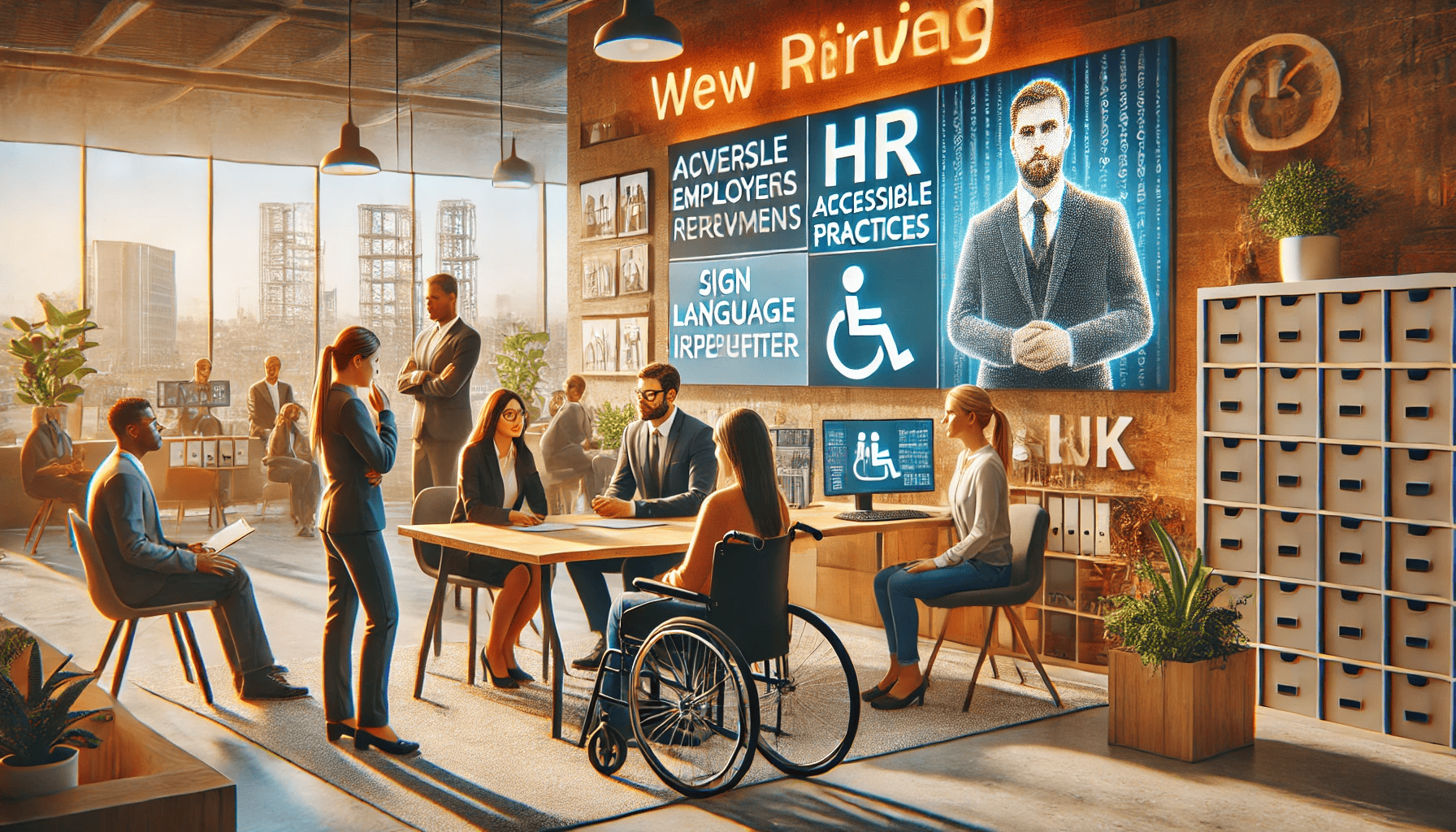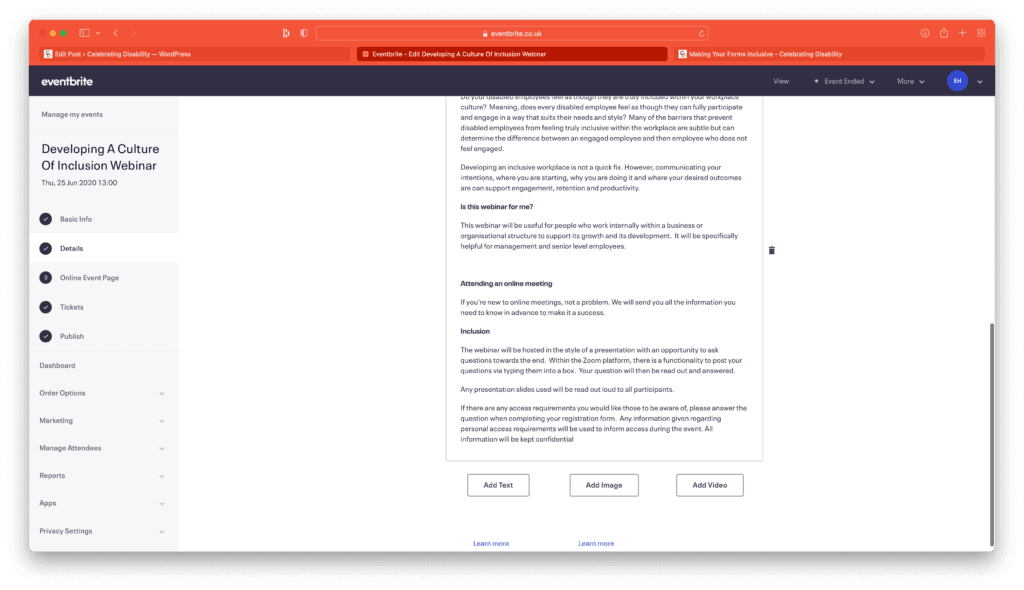For years, businesses have embraced Diversity, Equity, and Inclusion (DEI) as a way to build fairer, more innovative workplaces. At its best, DEI fosters environments where all employees – regardless of background, identity, or ability – have the opportunity to contribute and succeed.
But recently, the conversation around DEI has shifted. In the US., we’re seeing a growing backlash, with some companies scaling back their initiatives due to legal, political, or financial pressures. Critics argue that DEI has become performative, overly bureaucratic, or even counterproductive when reduced to a numbers game.
This shift raises important questions: What does DEI actually mean? Where has it gone wrong? And how can we ensure that inclusion – especially for disabled employees – remains a priority, even as the DEI label becomes more contentious?
To answer these, let’s start by breaking down what DEI is really about.
What DEI Really Means
Diversity, Equity, and Inclusion (DEI) has been a widely used framework for building fairer, more representative workplaces. At its core:
- Diversity refers to the range of identities and experiences people bring to a team across race, gender, disability, age, and more.
- Equity ensures that individuals have the tailored support they need to succeed, acknowledging that not everyone starts from the same place.
- Inclusion creates environments where all employees feel valued, heard, and empowered to contribute.
When done well, DEI is not just about hiring more diverse candidates or meeting quotas. It’s about fostering a workplace where everyone, regardless of background or ability, has equal access to opportunities.
Yet, in many cases, diversity, equity and inclusion has been reduced to a box-ticking exercise. When seen as performative or bureaucratic, it can create resistance rather than positive change. And in the US., that resistance is growing.
The Current DEI Backlash in the U.S. (A Brief, Non-Political Overview)
Over the past year, there has been a noticeable shift in how DEI is perceived—particularly in the U.S. The current administration has made it clear that the era of DEI in its current state is over, even going so far as to claim “DEI is dead” after the executive order was made.
Some high-profile companies, including Google, have scaled back or even scrapped DEI initiatives following this, and legal challenges have led to debates over the future of workplace diversity programs.
Some of the key reasons for this shift include:
- Legal scrutiny – Certain DEI programs have been challenged for being exclusionary or biased.
- Budget cuts – Economic pressures have led to downsizing, with DEI roles often among the first to go.
- Public perception – Some see DEI as divisive or unfair, particularly when it is viewed as a quota-driven effort rather than a meaningful approach to inclusion.
For those working in disability inclusion, this shift presents a challenge. Disability has often been overlooked in DEI conversations, despite over 1.3 billion people worldwide, around 16% of the world’s population, having a disability, according to the World Health Organization. If companies move away from DEI altogether, will disability inclusion efforts also be abandoned?
The good news is that we don’t need to rely on the label of ‘DEI’ to make the case for disability inclusion.
How to Advocate for Disability Inclusion (Without Calling It DEI)
If DEI as a term is becoming politically charged, we need to rethink how we talk about disability inclusion, focusing on practical, solution-oriented approaches that resonate across all business priorities.
1. Frame Disability Inclusion as Accessibility and Business Strategy
Rather than positioning disability inclusion as a DEI initiative, align it with accessibility, productivity, and talent retention.
- Companies that embrace accessibility see higher employee engagement and innovation, according to Modern Health.
- Inclusive workplaces help businesses attract and retain top talent, particularly as younger generations prioritise accessibility in their job searches.
- Creating accessible products and services expands market reach, benefiting both customers and employees.
By shifting the focus from DEI terminology to business success and compliance, disability inclusion becomes a practical necessity, not just a moral imperative.
2. Focus on Compliance and Legal Standards
In the UK., businesses have legal obligations under the Equality Act 2010, which protects disabled employees from discrimination. Similarly, in the US., the Americans with Disabilities Act (ADA) mandates reasonable accommodations in the workplace.
Even if companies are stepping back from DEI, compliance is non-negotiable. Businesses that fail to meet accessibility standards risk legal consequences and reputational damage.
When advocating for disability inclusion, emphasise:
- Legal risk reduction – Ensuring compliance protects companies from lawsuits and penalties.
- Cost-effectiveness – Implementing accessibility measures early is cheaper than retrofitting solutions later.
- Corporate reputation – Consumers and employees value businesses that prioritise accessibility and fairness.
3. Promote Disability Inclusion as a Workplace Productivity Booster
One major misconception about workplace accommodations is that they are expensive or burdensome. In reality, most disability accommodations cost nothing or very little – and they often benefit all employees.
For example:
- Flexible work arrangements help disabled employees, parents, and those with mental health challenges.
- Assistive technology improves efficiency for some neurodivergent employees and enhances usability for everyone.
- Clear communication strategies support employees with disabilities while improving overall workplace collaboration.
By demonstrating how accessibility boosts productivity, businesses will be more likely to invest in inclusive practices—regardless of whether they label it as DEI.
4. Lead with Inclusive Leadership and Employee Wellbeing
Instead of framing disability inclusion as part of DEI, position it as part of good leadership and employee wellbeing.
- Train managers on how to support disabled employees effectively.
- Encourage Employee Resource Groups (ERGs) that focus on disability advocacy in a way that aligns with business goals.
- Integrate accessibility into workplace culture – making it a standard practice rather than a special initiative.
When inclusion is embedded in leadership and wellbeing strategies, it becomes a natural part of workplace culture—rather than a separate “DEI program” that could be cut.
The Takeaway
The current changes in the US. DEI landscape highlight the need for a new way of advocating for disability inclusion—one that moves beyond labels and focuses on practical impact.
By framing disability inclusion as a business strength, a compliance necessity, and a driver of workplace productivity, we can ensure that accessibility remains a priority – regardless of shifting corporate attitudes toward DEI.
Disability inclusion isn’t a political issue. It’s a workplace reality. And when done right, it benefits everyone.
At Celebrating Disability, we’re passionate about DEI, no matter the label it falls under. If your business could benefit from event speaking to raise awareness, awareness training to implement change, or disability consultancy to develop strategy, we’re here to help. Click here to find out how we can support your DEI journey to continue.
